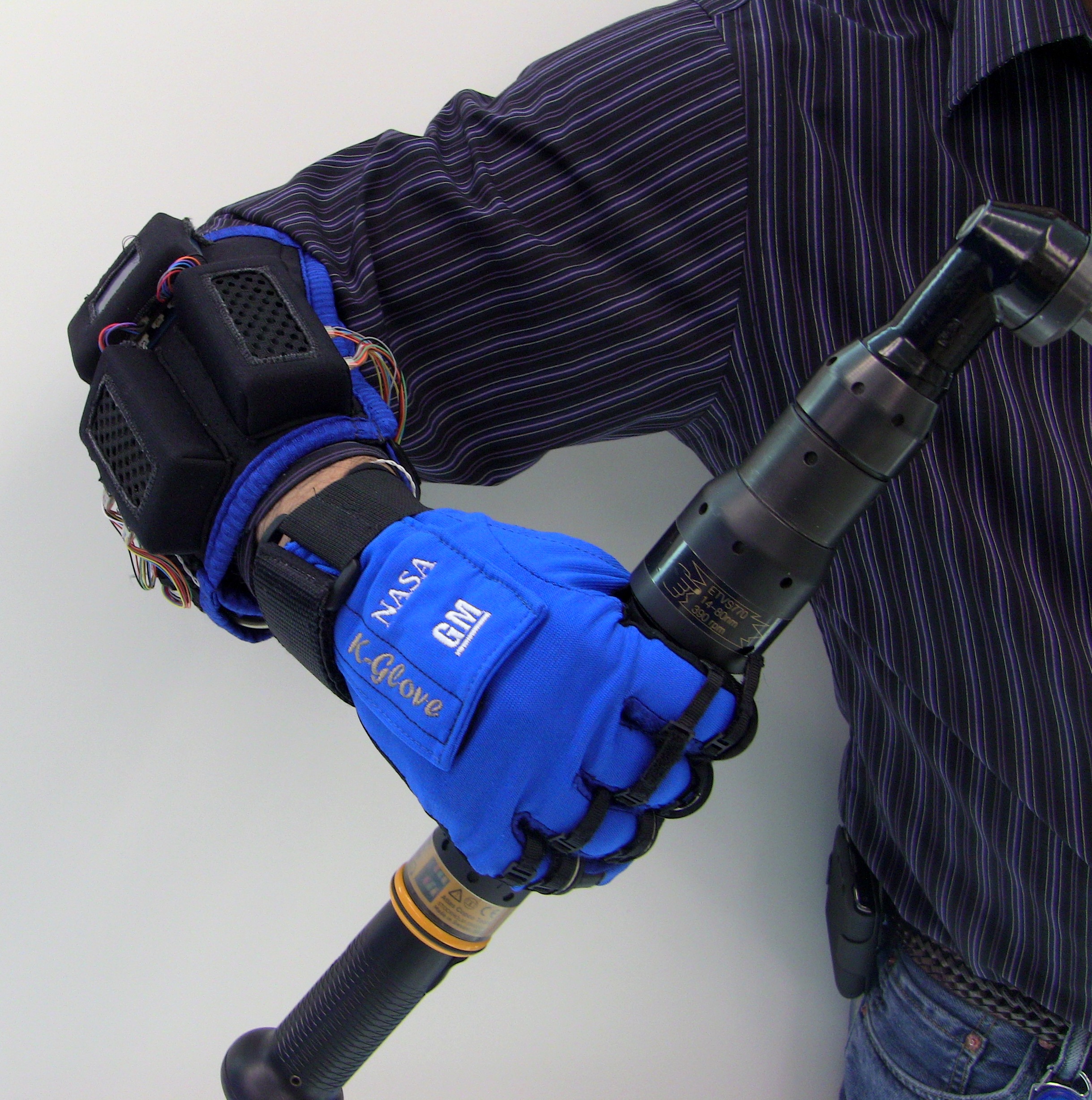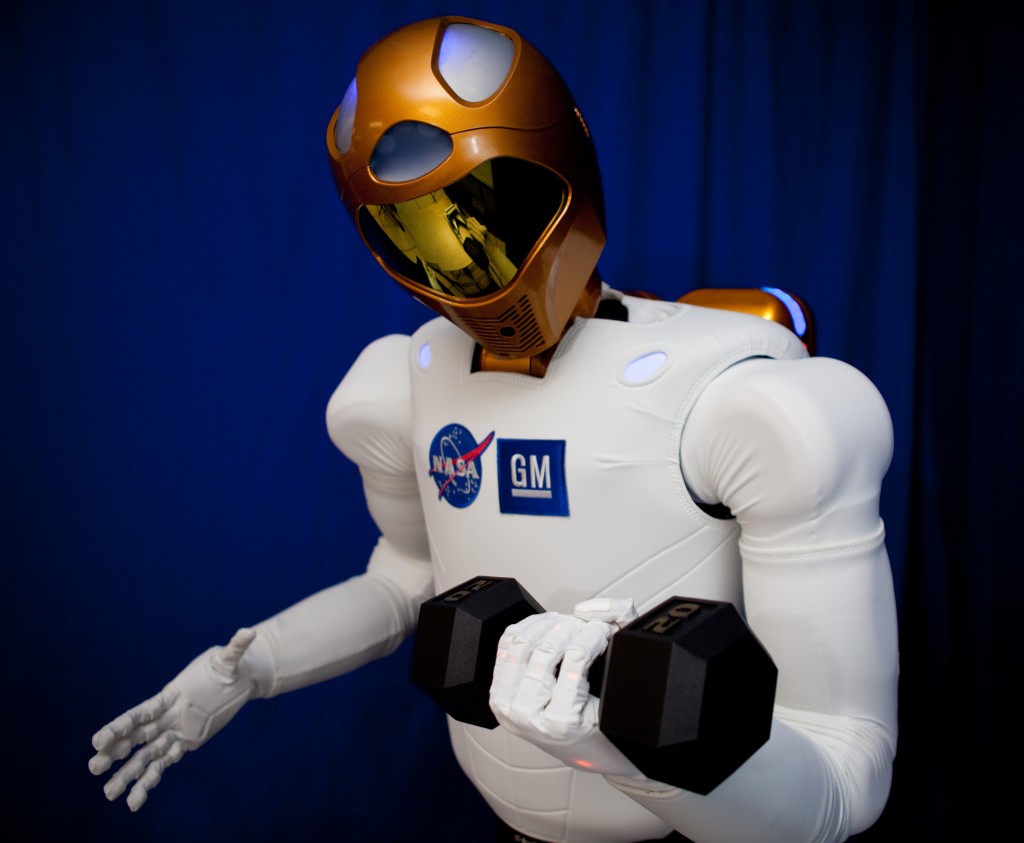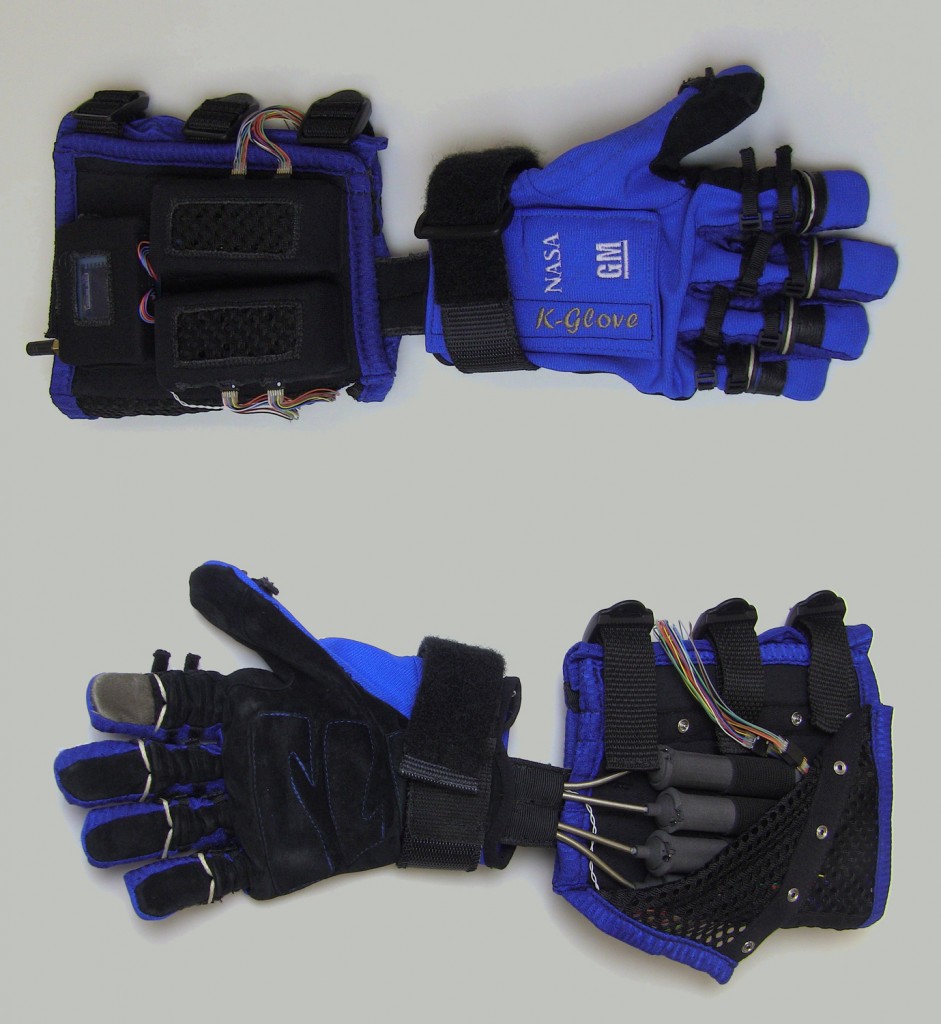Get a Grip with The Human Grasp Assist / Robo-Glove

A common disability that is sometimes overlooked is the inability to grasp or squeeze a hand. Whether caused by arthritis, nerve damage, or other causes; this can be a huge inconvenience since we rely on our hands so much. The new technology I’m featuring in this article is not made specifically for people with disabilities, but potential is there. The Human Grasp Assist or Robo-Glove is a joint development project between NASA and GM. A robotic glove that reduces the amount of strength needed grip.

Development of the Human Grasp Assist came from NASA’s Robonaut 2 project pictured above. A humanoid robot that is meant to work with humans and their tools on the International Space Station. The hands on the Robonaut were so well designed and intricate that the technology was moved to a glove for human use. Within the glove at the top are actuators that give the assisted force. Pressure sensors at the fingertips of the glove activate and deactivate the actuators. A lithium battery that straps around the forearm powers the glove.

GM and NASA made The Human Grasp Assist with the thought of auto workers or other manual labor workers. The glove could help reduce fatigue with gripping and lifting objects or when repetitively using a tool that requires a squeezing motion. Given this information, The Human Grasp Assist could potentially be converted into assistive technology. Giving people who have trouble grasping the ability to do more tasks on their own. Such as turning knobs, opening jars, or even shaking hands. As long as super strength is not part of the design! Future prototypes of the glove are being designed to be lighter and less bulky. Which again adds to its potential for people with disabilities. Below is a video demonstration of the glove at work. For more information on The Human Grasp Assist or Robonaut, visit this GM website.
